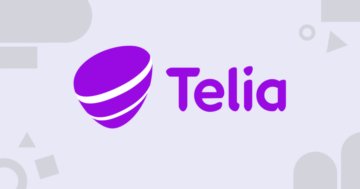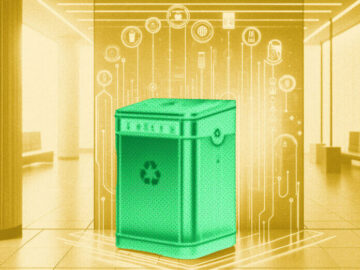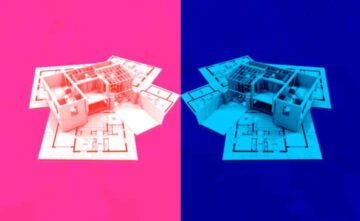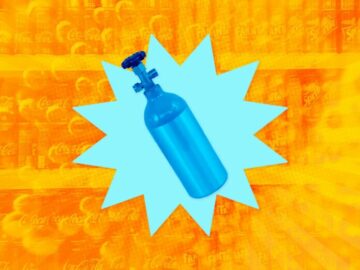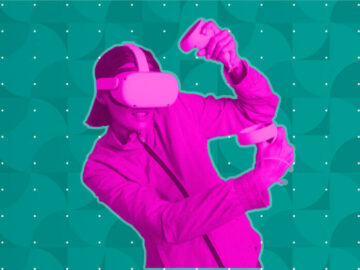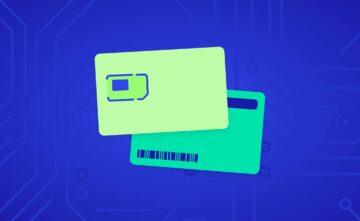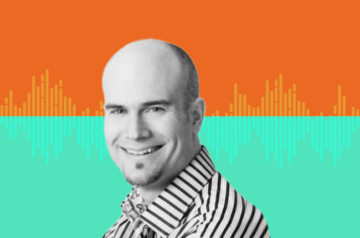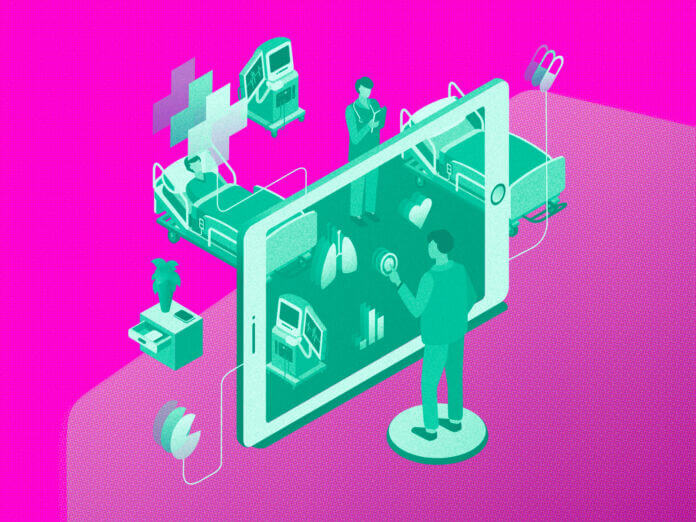
The development of IoT has made healthcare faster, more precise, and more patient centered. Healthcare uses IoT for real-time monitoring, data collection, and device connection. There is a general improvement in healthcare services. IoT integration of medical equipment, wearable electronics, and other healthcare sensors helps doctors and nurses make smart judgments and adapt patient treatment programs.
IoT technology plays a pivotal role in healthcare through applications such as remote monitoring of patients and the strategic planning of medical equipment maintenance. These applications enhance the operational efficiency of hospitals and improve patient care results. The reliance of the healthcare sector on IoT is evident, and this article illustrates its most effective implementations, supported by practical examples.
The global Healthcare IoT market is expected to grow from US$108.60bn in 2024 to US$167.70bn by 2028, with an annual growth rate of 11.47 percent during 2024-2028. We will see more use cases of IoT in healthcare in the upcoming years.
From chronic disease management to hospital efficiency, IoT enhances healthcare. The future will be more connected, efficient, and patient-friendly through IoT in healthcare.
Top Real-World Applications of IoT in Healthcare
RPM (Remote Patient Monitoring)
Smartwatches, phones, and monitors automatically collect health data. Remote patient monitoring devices collect health data like body temperature, blood pressure, body fat percentage, and more. IoT health devices display and transfer patient data to healthcare providers.
Someone may not be able to visit a hospital for the reasons listed. Despite being available for a visit, healthcare professionals may only be able to acquire his biometrics once he comes to the hospital. Many conditions require continual patient monitoring, which requires a hospital stay.
That necessity disappears with remote patient tracking data. These healthcare IoT devices can recommend therapies or give alarms based on data. A quick blood pressure rise or fall may alert doctors to take action.
When IoT healthcare devices constantly monitor patients, private data is at risk. This is their main concern. Hackers may attempt to access these medical devices.
Healthcare organizations must protect personal data under GDPR and HIPAA. Because of this, most devices secure their IoT hardware and software. Therefore, the healthcare industry must work with data-secure healthcare companies.
Monitor Your Heart Rate
IoT heart rate monitors are portable, but glucose monitors are not. Many smartwatches and IoT monitors can track a person’s heart rate continually. We can collect data while the patient sleeps. Heart rate changes with daily activity, making tracking harder than glucose levels.
Also, IoT helps monitor the stress level of the person. Here is the case study of the stress management and heart rate monitoring app that shows more details about how it is possible to track these measures. The main purpose of the stress management and heart rate monitoring app is to assist individuals in monitoring their heart rate and breathing using a discreet biosensing patch. The main aim is to help users comprehend how their body reacts to stress by providing gentle and secure biofeedback exercises.
Even at a hospital, regular heart rate checks may not prevent you from these fluctuations. These factors require hooked instruments to monitor patients, making it difficult for them to move. However, IoT devices are cheaper and don’t require hospitalization.
Heart rate monitor performance is the largest issue. Hospital medical devices are more accurate than IoT devices. Being portable doesn’t mean they’re ineffective. Most current devices acquire 90% percent accurate data. Many are okay with the slightly reduced accuracy because they can travel conveniently and cheaply.
Checking Hand Hygiene
Many hospitals and healthcare facilities utilize IoT devices to check hygiene and stay clean. Some people use these medical devices to remember to wash their hands often or while entering a room.
Critically ill patients occupy several hospital rooms. Pathogens could worsen these patients’ conditions. Even with generally healthy patients, hospitals must decontaminate properly. IoT devices can indicate how to clean hands or things or remind users to wash. Medical staff and patients use these tools to clean.
The major drawback of these gadgets is that they remind individuals to wash their hands. Healthcare and IoT devices can’t command handwashing or hospital room cleaning. No matter how you look at it, a simple message is always effective. This gadget reduces infections by sixty percent in usage.
Depression or Mood Monitoring
IoT medical devices can assess a patient’s mood and mental health by monitoring heart rate, blood pressure, and other biometrics. The latest IoT devices can track a person’s eyes.
Historically, mental health monitoring has been difficult. Doctors must question patients about their sentiments to diagnose them, but they can’t predict when their mood will change. Patients may lie about how they feel, which is another issue.
IoT devices’ use of biometrics instead of words is a plus. These health markers are outside the patient’s control and indicate mental health. Patient monitoring may continue as they sleep.
Questions remain about the reliability of these results. These devices can’t always detect depression or other issues. However, these challenges present another option: talking to the patient. These IoT devices are ideal for tracking grief since there is no better choice.
Parkinson’s Monitoring
Using IoT to treat Parkinson’s disease is interesting. These health monitors can measure Parkinson’s disease symptoms and their severity throughout the day. Doctors must track Parkinson’s symptoms and changes to prescribe the proper medication. Hospitals require extensive stays to monitor patients.
Health data collection by IoT devices simplifies this approach. Tracking patients saves money and allows them to live independently by reducing hospital stays. The device’s sensitivity is the most essential factor in finding indications. If the gadget is too sensitive, it may misinterpret a sign. However, a weak device may miss signs.
Consumable Sensors
These medical gadgets are little sensors that disintegrate or pass through the digestive system after eating, and as many of them as possible resemble pills to consume. Their duties include measuring the stomach’s PH and checking for internal bleeding.
Patients provided this information by inserting instruments or cameras into their digestive tracts through tubes until recently. Some patients find this treatment excessively intrusive.
Digestible sensors allow patients to choose less invasive treatments. Because ingestible sensors dissolve in the patient’s digestive system, they are cleaner and less disruptive than older approaches. Doctors do not have to manually insert the sensor into the digestive system, making the process easier. They must be tiny enough to swallow and strong enough to dissolve in the digestive system.
Contact Lenses Connected
These connected lenses have a camera and monitor, unlike ordinary contact lenses. These IoT glasses improve vision and detect early ailments.
What matters is that eyes weaken or have infections. They may worsen for a long time before seeking medical assistance. Some eye illnesses can strike swiftly, leaving little time for action. Connected contacts can detect early eye disorders. Fair enough, IoT glasses can detect certain general health issues. Tear glucose levels can indicate diabetes early on.
Finally, the lenses feature cameras for patients to capture images. This is one reason non-healthcare companies are developing the technology. Businesses are exploiting this technology in different ways. If someone steals into these connected devices and violates the security, they could secretly spy on users. It’s unsettling to believe you could see what others see.
This is why healthcare organizations should prioritize data security. Protection-seeking people should find companies they can trust whose projects fit together and satisfy the latest safety standards.
Robotic surgery
There is a new way to do surgeries with IoT medical equipment. Surgeons can implant Internet-connected robots to do surgeries. These reduce human errors when professionals demand precision. Hand procedures require larger cuts than robotic surgery, which is the main issue. When people perform difficult jobs, they require extra space for their hands.
IoT robotic devices help surgeons treat more accurately and successfully. Because IoT devices are easy to install, cuts are smaller. The patient can recover sooner and with less invasive treatment. These devices must be small and reliable for complex activities. They must also diagnose a patient’s condition and choose the suitable surgery.
These standards are achievable as surgeons already utilize these gadgets in many procedures. The tools are already beneficial for doctors and nurses. Technology may increase the usage of IoT robots in surgery.
One thing that all of those devices have in common, however, is that they can establish a connection to the Internet. Online workers and the Internet of Things healthcare device users care about data security. Even if they improve lives, IoT devices may be unsafe due to the security issues described above.
Use Cases of IoT in Healthcare
Emergency Care
Data and information collected on the way to the hospital affect emergency care. IoT devices help rescue workers prepare and provide faster, better medical care by collecting or sending data in real time.
Remote Health Monitoring & Care
Medical IoT devices collect patient data outside the hospital, such as heart rate and temperature. They do it in a remote home. Doctors evaluate data and give advice using custom software. They can also track when the patient requires immediate medical attention and when they’re not following their healthcare regimen.
Mobile Health
Healthcare app development health apps for phones IoT devices send patients’ medical or physical data to smartphones. Doctors can swiftly schedule online appointments with this application. Patients can monitor health signs without expert help.
Patient, Staff, and Medical Asset Tracking
RFID tags, BLE beacons, and wireless ID cards with RTLS can help medical centers track patients, personnel, and assets. It keeps new patients trackable and makes the hospital safer. They can find staff and move free resources in an emergency.
Electronic Health Records
Doctors can acquire real-time patient reports using IoHT systems. IoT in healthcare allows long-term patients to contact their doctors at any time. We can help you modernize EHR systems and incorporate IoT to collect and analyze live data.
Real-Time Health System
A software framework that integrates administrative, clinical, and operational operations. This mechanism is crucial to smart hospitals today. Access to critical patient events and clinical data eliminates data layers and makes healthcare systems more aware of their surroundings. RTHS simplifies operational, clinical, and administrative teamwork, improving healthcare services.
Real-World Examples of IoT in Healthcare
Asthma and COPD Care
Asthmatics and COPD patients can better manage their symptoms with connected inhalers that remind them to take medicine. Another is Propeller Health, which makes inhaler sensors with Glaxo SmithKline and Boehringer Ingelheim.
Better Diabetes Management
Robotic insulin administration devices can assist people with diabetes manage their condition. They monitor diabetics’ blood sugar and administer insulin. These devices can be hand dosed. Abbott and Medtronic provide innovative biotech diabetic support products from many new startups.
Patient Health Checks
Wearable gear provides real-time health and medical information. This tracking has helped Parkinson’s, mental health, and cardiac diseases.
Patient Monitoring by Providers
Wearable gear that monitors vital signs can enable doctors to monitor patients without traveling. These devices also allow doctors to manage care. IoT devices keep individuals at home and out of the hospital, freeing up beds for more critical patients.
Altering Patient Care
IoT has altered patient care, operational efficiency, and healthcare management. Real-world examples and application cases demonstrate IoT’s impact, from remote patient monitoring to predictive medical equipment maintenance. Real-time data collection and analysis have improved patient health and made healthcare providers’ duties easier.
Prevention, tailored medicine, and low-cost healthcare will improve as technology improves. The future of IoT in healthcare will make it more connected, responsive, and patient-centered. Long-term health outcomes and healthcare ecosystem efficiency will improve.
- SEO Powered Content & PR Distribution. Get Amplified Today.
- PlatoData.Network Vertical Generative Ai. Empower Yourself. Access Here.
- PlatoAiStream. Web3 Intelligence. Knowledge Amplified. Access Here.
- PlatoESG. Carbon, CleanTech, Energy, Environment, Solar, Waste Management. Access Here.
- PlatoHealth. Biotech and Clinical Trials Intelligence. Access Here.
- Source: https://www.iotforall.com/iot-in-healthcare-applications-and-use-cases-in-the-real-world
- :has
- :is
- :not
- $UP
- 1
- 11
- 2024
- 2028
- a
- Able
- About
- above
- access
- accuracy
- accurate
- accurately
- achievable
- acquire
- Action
- activities
- activity
- adapt
- administer
- administration
- administrative
- advice
- affect
- After
- aim
- Alert
- All
- allow
- allows
- already
- also
- altered
- always
- an
- analysis
- analyze
- and
- annual
- Another
- any
- app
- App development
- Application
- applications
- appointments
- approach
- approaches
- apps
- ARE
- article
- AS
- assess
- asset
- Assets
- assist
- Assistance
- At
- attempt
- attention
- automatically
- available
- aware
- based
- BE
- because
- been
- before
- being
- believe
- beneficial
- Better
- biometrics
- biotech
- Bleeding
- blood
- Blood Pressure
- body
- breathing
- businesses
- but
- by
- camera
- cameras
- CAN
- capture
- Cards
- care
- cases
- Centers
- certain
- challenges
- change
- Changes
- cheaper
- cheaply
- check
- checking
- Checks
- choice
- Choose
- clean
- cleaner
- Cleaning
- Clinical
- collect
- collected
- Collecting
- collection
- comes
- Common
- Companies
- complex
- comprehend
- Concern
- condition
- conditions
- connected
- connected devices
- connection
- constantly
- consume
- contact
- contacts
- continually
- continue
- control
- conveniently
- could
- critical
- crucial
- Current
- custom
- cuts
- daily
- data
- data security
- data-secure
- day
- Demand
- demonstrate
- depression
- described
- Despite
- details
- detect
- developing
- Development
- device
- Devices
- Diabetes
- diagnose
- different
- difficult
- Disease
- diseases
- disorders
- Display
- disruptive
- do
- Doctors
- Doesn’t
- Dont
- dosed
- due
- during
- Early
- easier
- easy
- ecosystem
- Effective
- efficiency
- efficient
- Electronics
- eliminates
- emergency
- enable
- enhance
- Enhances
- enough
- entering
- equipment
- Errors
- essential
- establish
- Ether (ETH)
- evaluate
- Even
- events
- evident
- examples
- excessively
- exercises
- expected
- expert
- exploiting
- extensive
- extra
- eye
- Eyes
- facilities
- factor
- factors
- fair
- Fall
- faster
- Fat
- Feature
- feel
- Find
- finding
- fit
- fluctuations
- following
- For
- Framework
- Free
- freeing
- from
- future
- Gadgets
- GDPR
- Gear
- General
- generally
- gentle
- Give
- glasses
- Grow
- Growth
- hackers
- hand
- Hands
- harder
- Hardware
- Have
- he
- Health
- health apps
- healthcare
- healthcare industry
- healthcare sector
- healthy
- Heart
- help
- helped
- helps
- here
- his
- Home
- Hospital
- hospitals
- How
- How To
- However
- HTTPS
- human
- ID
- ideal
- if
- illustrates
- images
- immediate
- Impact
- implementations
- improve
- improved
- improvement
- improves
- improving
- in
- include
- incorporate
- Increase
- independently
- indicate
- indications
- individuals
- industry
- Infections
- information
- innovative
- install
- instead
- instruments
- Integrates
- integration
- interesting
- internal
- Internet
- internet of things
- internet-connected
- into
- intrusive
- invasive
- iot
- iot devices
- issue
- issues
- IT
- ITS
- Jobs
- jpg
- judgments
- Keep
- larger
- largest
- latest
- layers
- leaving
- lenses
- less
- Level
- levels
- lie
- like
- Listed
- little
- live
- live data
- Lives
- Long
- long time
- long-term
- Look
- low-cost
- made
- Main
- maintenance
- major
- make
- MAKES
- Making
- manage
- management
- manually
- many
- Matter
- Matters
- max-width
- May..
- mean
- measure
- measures
- measuring
- mechanism
- medical
- medical care
- medical devices
- medical equipment
- medication
- medicine
- mental
- Mental health
- message
- miss
- modernize
- money
- Monitor
- monitoring
- monitors
- mood
- more
- most
- move
- must
- necessity
- New
- no
- of
- often
- Okay
- older
- on
- once
- ONE
- online
- only
- operational
- Operations
- Option
- or
- ordinary
- organizations
- Other
- Others
- out
- outcomes
- outside
- Parkinson’s Disease
- pass
- Patch
- patient
- patient care
- patient data
- patient monitoring
- patients
- People
- percent
- percentage
- perform
- performance
- person
- personal
- personal data
- Personnel
- phones
- physical
- pills
- pivotal
- planning
- plato
- Plato Data Intelligence
- PlatoData
- plays
- plus
- portable
- possible
- Practical
- precise
- Precision
- predict
- predictive
- Prepare
- prescribe
- present
- pressure
- prevent
- Prioritize
- private
- procedures
- process
- Products
- professionals
- Programs
- projects
- proper
- properly
- protect
- provide
- provided
- providers
- provides
- providing
- purpose
- question
- Quick
- Rate
- Reacts
- real
- real world
- real-time
- real-time data
- reason
- reasons
- recently
- recommend
- Recover
- reduce
- Reduced
- reduces
- reducing
- regimen
- regular
- reliability
- reliable
- reliance
- remain
- remember
- remote
- Reports
- require
- requires
- rescue
- Resources
- responsive
- Results
- Rise
- Risk
- Robotic
- robots
- Role
- Room
- Rooms
- safer
- Safety
- satisfy
- schedule
- sector
- secure
- security
- see
- seeking
- send
- sending
- sensitive
- Sensitivity
- sensors
- sentiments
- Services
- several
- severity
- should
- Shows
- sign
- Signs
- Simple
- simplifies
- since
- sleep
- slightly
- small
- smaller
- smart
- smartphones
- smartwatches
- Software
- some
- Someone
- Space
- Staff
- standards
- Startups
- stay
- stays
- steals
- Strategic
- stress
- strike
- strong
- Successfully
- such
- sugar
- suitable
- support
- Supported
- Surgery
- swiftly
- Symptoms
- system
- Systems
- tailored
- Take
- talking
- teamwork
- Technology
- than
- that
- The
- The Future
- the security
- their
- Them
- therapies
- There.
- therefore
- These
- they
- thing
- things
- this
- those
- Through
- throughout
- time
- tiny
- to
- today
- together
- too
- tools
- track
- trackable
- Tracking
- transfer
- travel
- Traveling
- treat
- treatment
- treatments
- Trust
- under
- unlike
- unsafe
- until
- upcoming
- Usage
- use
- users
- uses
- using
- utilize
- vision
- Visit
- vital
- Way..
- ways
- we
- wearable
- What
- when
- which
- while
- whose
- why
- will
- wireless
- with
- without
- words
- Work
- workers
- world
- worsen
- years
- you
- Your
- zephyrnet


